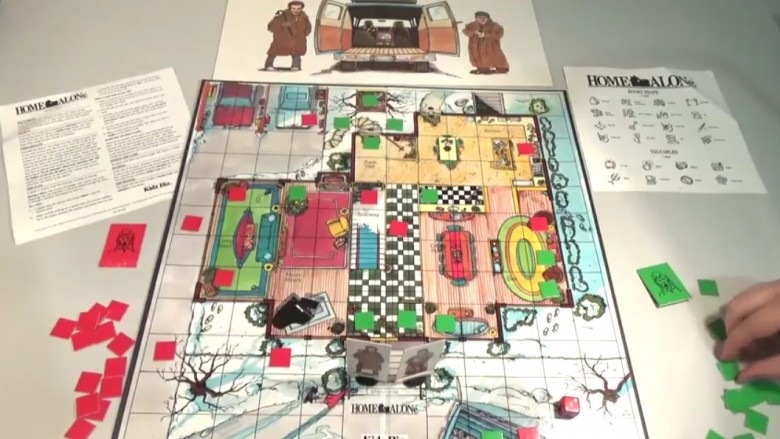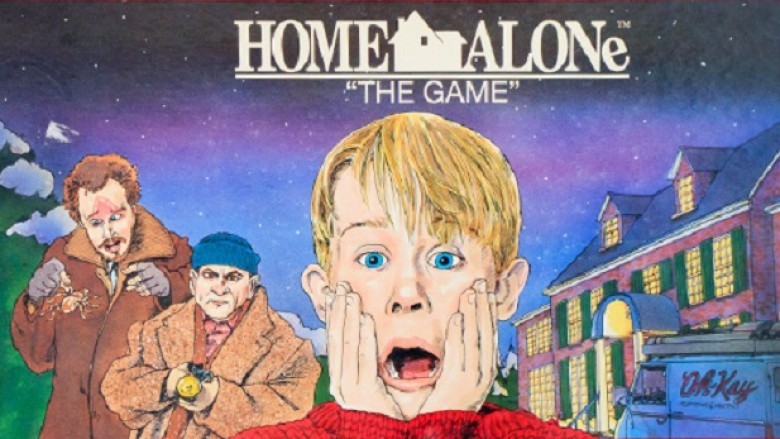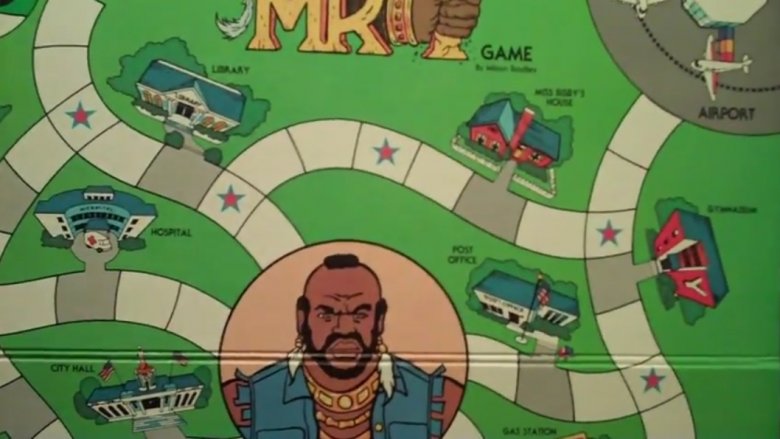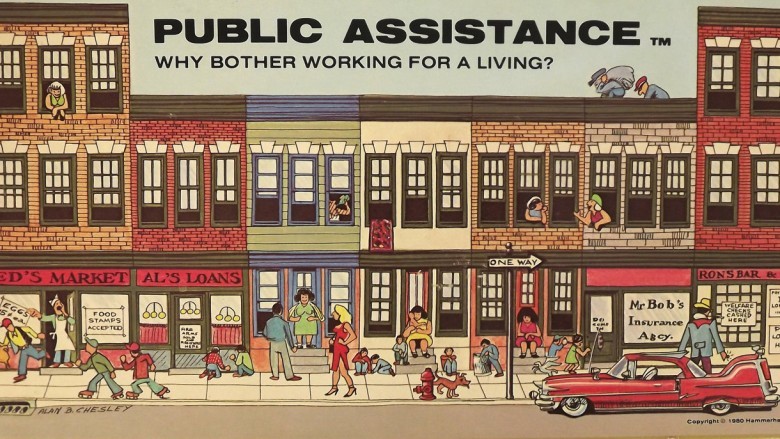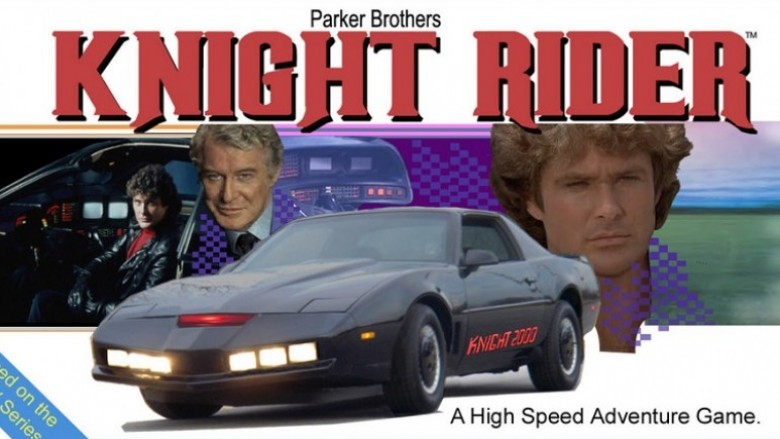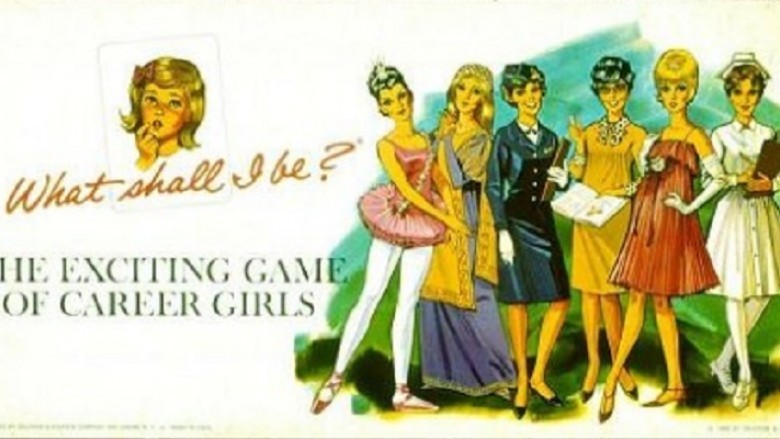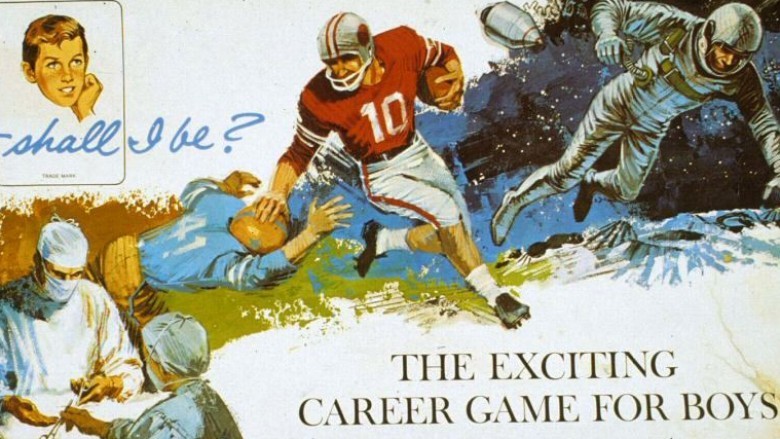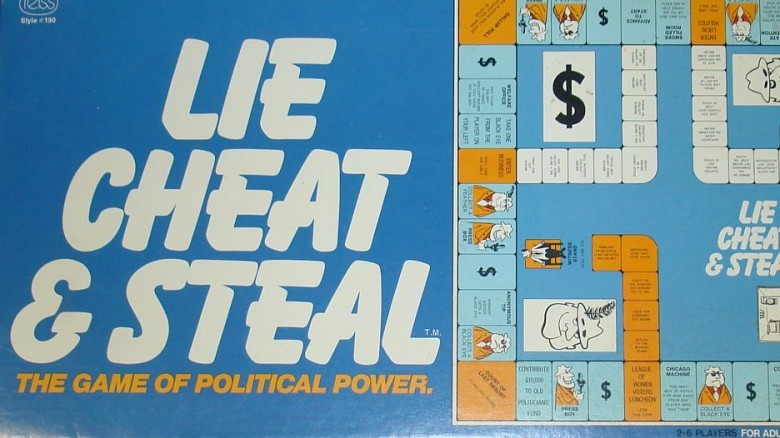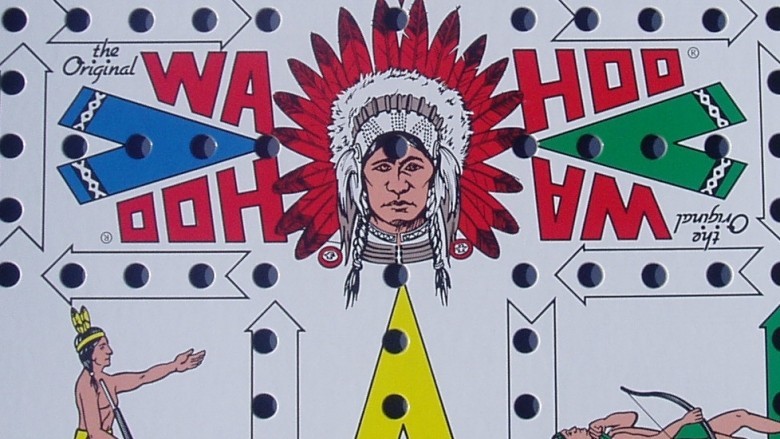Strangest Board Games To Ever Exist
Before family time meant everyone tapped away at their cell phones, board games were the centerpiece of the shared family experience. But for every Monopoly or Clue, For every Monopoly or Clue, there were plenty of ridiculous board games. Some of them were just the strangest, oddest creations ever devised, designed more to fill the darkest reaches of the closet and occupy the dustiest shelves than to actually be, you know, fun:
Trump: The Board Game (1985)
Hey kids, gather around. You're going to have fun. Big fun. Yuge fun.
Many moons before anyone would have suspected that Donald Trump would morph from real estate mogul to most powerful man in the United States, you could play Trump: The Game and try to become the most powerful among your friends. In a game obviously derived from Monopoly, players would make their way around the board, blindly dumping cash into eight different properties, not having any idea of whether they are worth any money! Stock market 101, basically.
Once everyone snatches up properties like they were Atlantic City casinos, they use the handy "Trump cards" to buy and sell, negotiating until everyone had had a turn. Since this is Trump's world, the person with the most money wins — moving into the White House and sleeping with the nuclear codes are optional.
The game is considered one of Trump's failures, so don't expect to hear him talk about it, ever. Not that it matters — you don't want to play this game. It's SAD.
Murder She Wrote (1985)
Murder, She Wrote was a CBS series starring the legendary Angela Lansbury as mystery writer Jessica Fletcher, who takes her exceptional skills for crafting mystery stories and flips the hourglass, putting them to work as a crime-solving detective. The show is no more, nbut we'll always have this game, where players attempt to solve a murder while the murderer among them kills off potential witnesses, while plotting his escape. Good times.
Obviously Clue in Jessica's clothing, players try to deduce the identity of the murder, marking down locations they investigate as the game moves along. Flip cards in the different rooms, they determine whether witnesses are still breathing or have been killed. Hey, good, this guy is still breathing! Can this be any more depressing? Oh wait, it can, because the secretly chosen murderer attempts to spoil the day by murdering five witnesses before escaping, if they can do it before their identity is revealed. It's a game of cat-and-mouse, as much as anything about Angela Lansbury shuffling down a dark hallway with a flashlight can be.
Home Alone: "The Game" (1991)
A Home Alone board game was a natural extension of the film's "set booby traps and all but kill the burglars" premise ... in theory. It's an obvious takeoff of Mousetrap, with all sorts of cool "traps" you can build, right? Well, not really. First all, you're playing as the bandits, not Kevin. So, the goal is to ruin a kid's staycation by robbing him of valuables until the kid is revealed — at which point, it's something of a chase to catch this kid who can move faster and has all sorts of escape routes you can't access. Pursuit hasn't been this hard since Tom tried to catch Jerry.
Even odder, most of the game play revolves around picking a color and flipping over that color's cards, revealing whether they're traps that hurt, or valuables that help you. Here's the kicker: once the cards are placed down, the game requires you to remember what is placed where. So, if you don't have a photographic memory, you'll spend a lot of time aimlessly moving around hoping to gain points, as it's seemingly impossible to remember what's under all 25 of your cards.
The game (mercifully) ends when one of the bandits lands on a square occupied by Kevin — at which point all the points are tallied, and Kevin dies, presumably. It's all the excitement of Harry and Marv robbing your home, plus child murder and minus the charm of setting them on fire or smashing them in the face with paint cans.
Mr. T: The Game (1983)
In the 1980s, few men on Planet Earth were cooler than Mr. T. His brandished a Mohawk. He beat up Rocky Balboa. He boxed "Rowdy" Roddy Piper. He starred in The A-Team. He had a crappy board game! What couldn't that man do, besides not pity fools?
Yep, T had a game, based on his ridiculous cartoon show where he was the bodyguard of a bunch of gymnasts. But the game, see, is a prequel. While T and his team were already on the road in the series, the game tasks them with actually making it to the airport to leave. That's literally it — Mr. T doesn't beat anyone up, but his team uses the bus to complete errands before they miss their flight. Its like a Luke Skywalker game where the goal is to get to Tosche Station to pick up some power converters.
The game features such dramatic twists as ... having to pick up laundry from the cleaners! Swinging by the police to report a crime! Saying farewell to the team mascot (apparently he can't get through TSA) en route to completing their errands and attempting to get to the plane before the other players! Hopefully there's no line at check-in. Oh, and guess who's the one person you don't get to play as: Mr. T! You had one job, game!
Public Assistance (1980)
Why bother working for a living? That's literally the tagline for Public Assistance, a game designed to mock the United States government's domestic policies in a most ill-mannered way.
In the game, players have to pick one of two paths: either the "working person's rut" or "able-bodied welfare recipient's promenade." The idea is to see who can freeload the most from the government and, after taxes, have the most money. If you pick welfare, you pick having kids out of wedlock and stepping into armed robbery and drug dealing to make some extra cash and get ahead. If you decide to be one of the working people, you deal with the rat race of underwhelming paychecks, overwhelming debt and paying taxes to fuel the welfare system.
Over the course of the game, you could end up with a great government job or end up in jail for committing crime, but either way, you're trapped in a rigged system that forces you into the worst choices and situations. Obviously, this is a way better wedding gift than some diamond.
As one might imagine, there was a huge push back against the game for what was seen as racist overtones, but that only assisted the promotion of the game, which changed its artwork to reflect that the game had been "banned." Whether it should have or not is a matter of good taste but, just like the game, either choice leaves you with one unfortunate truth: the game remains a bookmark of strange creativity.
Vanilla Ice Electronic Rap Game (1991)
Let's travel back to the '90s, where everyone except Suge Knight wanted to be cool as Ice. When Ice burst upon the scene with Ice Ice Baby, he did what every self-respecting musical artist does: he licensed himself out to International Games. Respect to your mother. So, with the Vanilla Ice Electronic Rap Game (described as "Vanilla Ice's easy to play rap-happy rhyme to rhythm game," which is honestly a way better title) we all get the chance to drop the beat like Robert Van Winkle himself.
Attempting to mimic Ice, players assemble a string of lyrics across the board, utilizing cards that they place over Vanilla Ice's face until a line is complete. They then rap the verse, building points. The hip-hopper with the most points at the end gets the honor of rapping the entire created song, dropping the mic, getting rich, blowing it all, and embracing nu-metal only to have all of nu-metal laugh you off the stage.
Frogger (1981)
Frogger was a classic first-generation arcade game, where players controlled a frog making its way across traffic and water while avoiding dangerous predators, on the way to the safe haven of a lily pad. Like many of the classic games of the era, Frogger was extremely popular, and even became an animated cartoon. So, its only natural you turn it into a board game too, right?
Yes, years before retro was a marketing term, the odd decision was made to take a game that was making bank, quarter by quarter, and build a board game around it. Truth be told, the game remains pretty faithful to the game's story and gameplay, but it lacks the immediacy and eye-hand coordination one needs to excel at the 8-bit version. Where the game play changes is that, since you're now competing against other players, you use your frog to place obstacles in your opponents' path, trying to squish them with logs and cars. Ouch! Kermit the Frog would not approve.
Knight Rider (1982)
Before Siri populated our lives, KITT was the coolest talking AI ever known. The centerpiece of NBC action series Knight Rider, KITT was the jabberjawed, seemingly indestructible car driven by David Hasselhoff's Michael Knight. While major car stunts kept things fast and furious, the novelty of a talking car in the pre-internet era was the coolest. KITT was the original JARVIS from back in the day, when Robert Downey Jr. was still just The Pick-up Artist.
In the game, you're in command of KITT, speeding around the board in pursuit of, well, "trouble spots." You clear those, and you win bonus money. The person with the most clearances (and money) wins the game. That's it. No racing. No saving Michael Knight. No KITT vs. his evil twin KARR — just some rubber cars trying to overcome road work in pursuit of cold, hard cash.
Even if you are the 'Hoff, don't hassle yourself with this one. You'll lose interest faster than NBC cancels Knight Rider reboots.
What Shall I Be? The Exciting Game For Career Girls (1966)
Ah, the swinging '60s, when a woman who wanted a career had to mitigate her dreams to only include certain, girly jobs. It was an enlightened time, where women could dream of being nurses (not doctors) or teachers (not professors), and What Shall I Be? The Exciting Career Game for Girls allowed young girls to discover, early on, the parameters of life during that time period.
Players picked the career they want and then moved about the board, attempting to collect the School Cards, Subject Cards, and Personality Cards that will prepare them for their chosen profession. The first person to accomplish this task gained the career of their choice, but still found themselves trapped under the glass ceiling that was the 1960s. Undoubtedly, this game allowed for all the dreamers to shatter that glass ceiling that exists for women wishing to enter charm school, or pursue the refreshing career of airline hostess.
Shockingly, "unhappy housewife trapped at home" wasn't one of the career choices. Oh well, a gal could dream, right?
What Shall I Be? The Exciting Career Game for Boys (1968)
A sequel to What Shall I Be? The Exciting Career Game for Girls, here comes What Shall I Be? The Exciting Career Game for Boys. It follows a similar journey to the original game, except this one includes career choices more suited for strapping young men. Unlike women, who are relegated to being models or flight hostesses, boys playing the game can literally shoot for the stars, attempting to become astronauts. The game also allows for them to become scientists, doctors, and even a Statesman!
Game play is identical to the girl's version, which feels even more depressing when compared to this sequel, which allows little Johnny to learn the entire world is his oyster. Players collect cards while building to their dreams, and that's basically it. Nothing like a good board game to undermine half the population, while pushing the other half to conquer the world.
Lie, Cheat, & Steal - The Game of Political Power (1971)
Simulating the excitement of being elected to public office, Lie, Cheat & Steal actually helped unwittingly set the table for America to prepare themselves for the Nixon administration. Unlike most political simulation games, which are built around how elections are supposed to happen, in this one you gain power the same way many real-world politicians do: you cheat.
Quicker than you can say, "I am not a crook" the game has you buying votes, making secret deals under the table, stealing from the public treasury, and calling for investigations against your opponents, all en route to achieving your ultimate goal of ruling over all. You do all this while trying to avoid the "black eye crimes" that can hurt your political aspirations, like "being caught at a pot party." Nowadays, in certain parts of the country, that last one might help you get elected.
The game allows for up to five players, so you have the chance to practice ruining their lives in advance. If you ever wanted to crush the hopes of those around you, and know what it's like to live without a conscience, this one is for you.
Wa-hoo!
Wa-hoo! is an offensive take on the Wahoo board game that's been around since the early 20th century. It's similar to the basic version of the original game, where each player attempts to move his colored marbles across the board and get them to the safety of his home space. Wa-hoo! has one major difference: the Native American overlay, as you attempt to move the marbles to your Tribal Grounds. Really?
The game makers claim it's based on folklore, but we know what it's really based on. What makes this even stranger is not that it's a symbol of how far we've come from the days of being intolerant knuckleheads, but that's it's still for sale today. We can't wait for the Washington Redskins to give copies away on Wa-hoo Day!
